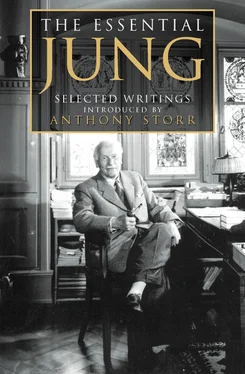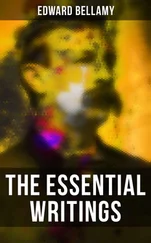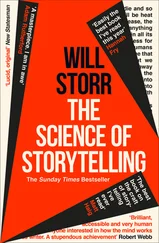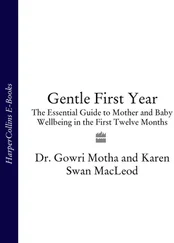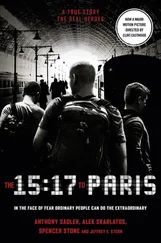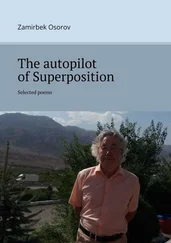As formerly the neurotic could not escape from childhood, so now he cannot part with his youth. He shrinks from the grey thoughts of approaching age, and, feeling the prospect before him unbearable, is always straining to look behind him. Just as the childish person shrinks back from the unknown in the world and in human existence, so the grown man shrinks back from the second half of life. It is as if unknown and dangerous tasks awaited him, or as if he were threatened with sacrifices and losses which he does not wish to accept, or as if his life up to now seemed to him so fair and precious that he could not relinquish it.
Jung’s “confrontation with the unconscious,” as he termed it, turned out to be both extremely disturbing and highly rewarding.
From “Confrontation with the Unconscious” MDR, pp. 167–74/172–81
One fantasy kept returning: there was something dead present, but it was also still alive. For example, corpses were placed in crematory ovens, but were then discovered to be still living. These fantasies came to a head and were simultaneously resolved in a dream.
I was in a region like the Alyscamps near Arles. There they have a lane of sarcophagi which go back to Merovingian times. In the dream I was coming from the city, and saw before me a similar lane with a long row of tombs. They were pedestals with stone slabs on which the dead lay. They reminded me of old church burial vaults, where knights in armour he outstretched. Thus the dead lay in my dream, in their antique clothes, with hands clasped, the difference being that they were not hewn out of stone, but in a curious fashion mummified. I stood still in front of the first grave and looked at the dead man, who was a person of the eighteen-thirties. I looked at his clothes with interest, whereupon he suddenly moved and came to life. He unclasped his hands; but that was only because I was looking at him. I had an extremely unpleasant feeling, but walked on and came to another body. He belonged to the eighteenth century. There exactly the same thing happened: when I looked at him, he came to life and moved his hands. So I went down the whole row, until I came to the twelfth century – that is, to a crusader in chain mail who lay there with clasped hands. His figure seemed carved out of wood. For a long time I looked at him and thought he was really dead. But suddenly I saw that a finger of his left hand was beginning to stir gently.
Of course, I had originally held to Freud’s view that vestiges of old experiences exist in the unconscious. * But dreams like this, and my actual experiences of the unconscious, taught me that such contents are not dead, outmoded forms, but belong to our living being. My work had confirmed this assumption, and in the course of years there developed from it the theory of archetypes.
The dreams, however, could not help me over my feeling of disorientation. On the contrary, I lived as if under constant inner pressure. At times this became so strong that I suspected there was some psychic disturbance in myself. Therefore I twice went over all the details of my entire life, with particular attention to childhood memories; for I thought there might be something in my past which I could not see and which might possibly be the cause of the disturbance. But this retrospection led to nothing but a fresh acknowledgment of my own ignorance. Thereupon I said to myself, “Since I know nothing at all, I shall simply do whatever occurs to me.” Thus I consciously submitted myself to the impulses of the unconscious.
The first thing that came to the surface was a childhood memory from perhaps my tenth or eleventh year. At that time I had had a spell of playing passionately with building blocks. I distinctly recalled how I had built little houses and castles, using bottles to form the sides of gates and vaults. Somewhat later I had used ordinary stones, with mud for mortar. These structures had fascinated me for a long time. To my astonishment, this memory was accompanied by a good deal of emotion. “Aha,” I said to myself, “there is still life in these things. The small boy is still around, and possesses a creative life which I lack. But how can I make my way to it?” For as a grown man it seemed impossible to me that I should be able to bridge the distance from the present back to my eleventh year. Yet if I wanted to re-establish contact with that period, I had no choice but to return to it and take up once more that child’s life with his childish games. This moment was a turning point in my fate, but I gave in only after endless resistances and with a sense of resignation. For it was a painfully humiliating experience to realize that there was nothing to be done except play childish games.
Nevertheless, I began accumulating suitable stones, gathering them partly from the lake shore and partly from the water. And I started building: cottages, a castle, a whole village. The church was still missing, so I made a square building with a hexagonal drum on top of it, and a dome. A church also requires an altar, but I hesitated to build that.
Preoccupied with the question of how I could approach this task, I was walking along the lake as usual one day, picking stones out of the gravel on the shore. Suddenly I caught sight of a red stone, a four-sided pyramid about an inch and a half high. It was a fragment of stone which had been polished into this shape by the action of the water – a pure product of chance. I knew at once: this was the altar! I placed it in the middle under the dome, and as I did so, I recalled the underground phallus of my childhood dream. This connection gave me a feeling of satisfaction.
I went on with my building game after the noon meal every day, whenever the weather permitted. As soon as I was through eating, I began playing, and continued to do so until the patients arrived; and if I was finished with my work early enough in the evening, I went back to building. In the course of this activity my thoughts clarified, and I was able to grasp the fantasies whose presence in myself I dimly felt.
Naturally, I thought about the significance of what I was doing, and asked myself, “Now, really, what are you about? You are building a small town, and doing it as if it were a rite!” I had no answer to my question, only the inner certainty that I was on the way to discovering my own myth. For the building game was only a beginning. It released a stream of fantasies which I later carefully wrote down.
This sort of thing has been consistent with me, and at any time in my later life when I came up against a blank wall, I painted a picture or hewed stone. Each such experience proved to be a rite d’entrée for the ideas and works that followed hard upon it. Everything that I have written this year * and last year, “The Undiscovered Self,” “Flying Saucers: A Modern Myth,” “A Psychological View of Conscience,” has grown out of the stone sculptures I did after my wife’s death. † The close of life, the end, and what it made me realize, wrenched me violently out of myself. It cost me a great deal to regain my footing, and contact with stone helped me.
Towards the autumn of 1913 the pressure which I had felt was in me seemed to be moving outwards, as though there were something in the air. The atmosphere actually seemed to me darker than it had been. It was as though the sense of oppression no longer sprang exclusively from a psychic situation, but from concrete reality. This feeling grew more and more intense.
In October, while I was alone on a journey, I was suddenly seized by an overpowering vision: I saw a monstrous flood covering all the northern and low-lying lands between the North Sea and the Alps. When it came up to Switzerland I saw that the mountains grew higher and higher to protect our country. I realized that a frightful catastrophe was in progress. I saw the mighty yellow waves, the floating rubble of civilization, and the drowned bodies of uncounted thousands. Then the whole sea turned to blood. This vision lasted about one hour. I was perplexed and nauseated, and ashamed of my weakness.
Читать дальше
